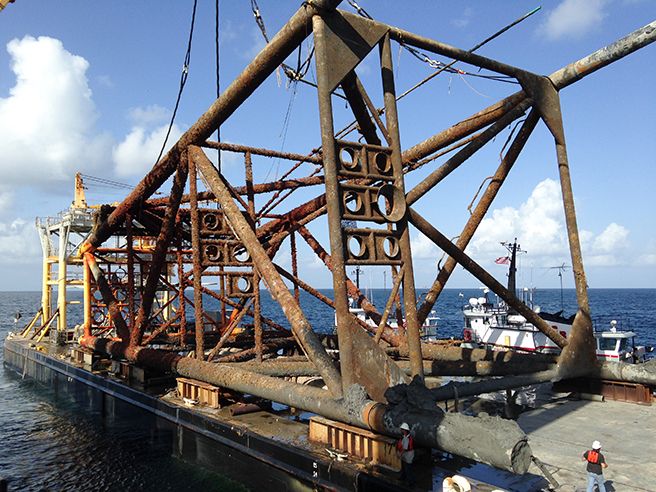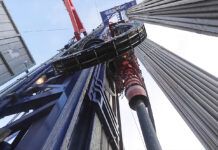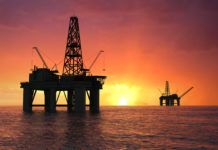While in its essence an environmental solution, the practice of converting offshore platforms into artificial reefs is usually a matter of financial common sense. Number crunchers working for oil and gas companies weigh a host of factors when determining if a decommissioned platform is better off scrapped or reefed. In the end, it’s a decision tied closely to the bottom line.
Louisiana is one of the biggest proponents of artificial reef creation in the U.S. Through its Artificial Reef Program, which falls under the federal Rigs to Reefs Policy as overseen by the Bureau of Safety and Environmental Enforcement, the state utilizes obsolete oil and gas platforms as habitats for many of Louisiana’s coastal fishes. Since the state program’s inception in 1986, 71 oil and gas-related companies have participated by donating the “jackets” of decommissioned oil and gas structures. Some 390 structures have been reefed in Louisiana waters.
Mike McDonough, artificial reef coordinator at the Louisiana Department of Wildlife and Fisheries, says cost determines a platform’s eventual fate, impacted by its distance from shore and proximity to designated reef locations.
“If you’ve got a shallow water platform that’s close to shore, it’s usually cheaper to just take it to shore for scrapping,” he adds. “When the distance to the reef site is too big, that drives up the cost of reefing and drives down the financial savings.” One potential cost-saving move could encourage participation—new LDWF regulations allow some platforms to reef in place, thereby negating the expense of transporting the structures.
IRON IN THE GULF
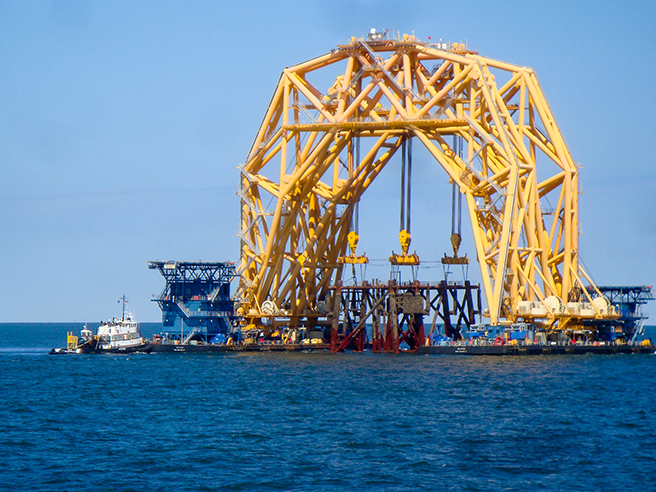
Over 7,000 offshore oil and gas platforms have been installed in the Gulf of Mexico since 1947. For whatever reasons, fish and other marine life find these structures to be an extremely useful part of their ecosystem. (One study of rigs in the Pacific found they hosted seven times the aquatic population of even the rich natural reefs of the south Pacific.)
In addition to meeting the world’s energy needs, the infrastructure of the oil and gas industry has literally formed one of the world’s most extensive de facto artificial reef systems. Simply removing the rigs after they are no longer in use equates to “a public loss of productive marine habitat,” the LDWF website notes.
But federal law and international treaty require that platforms be removed one year after production ceases. Elena Kobrinski, a researcher at the Harte Research Institute for Gulf of Mexico Studies at Texas A&M in Corpus Christi, says Rigs to Reefs programs have become increasingly important in the eyes of the federal government due to the sheer number of idle platforms currently sitting in the Gulf of Mexico.
“We have almost 3,000 platforms in the Gulf right now, and as of January 2016 we have 243 idle platforms and 2,089 wells sitting idle,” Kobrinski said, speaking at the Gulf of Mexico Oil Spill & Ecosystem Science Conference in New Orleans in February. “These numbers are going to continue to increase and the federal government is responsible for managing this.”
In January 2015, decommissioning costs were estimated to be a staggering $2.3 billion.
While the original lessee is responsible for removing the structures, subleases and bankruptcies have complicated the issue. “The original lessee is no longer in the picture and those sub-lessees might not have the money to remove the structure at the conclusion of the lease contract,” Kobrinski says. As such, the federal government becomes liable for the structures.
To address the problem, in 2010 BSEE released “Decommissioning Guidance for Wells and Platforms,” also known as the “Idle Iron Policy,” forcing companies responsible for structures no longer in use to remove them within three years. Subsequently, in 2013, the agency offered a deadline extension should a company be in current negotiations to enlist a structure in a Rigs to Reefs program.
While downturns in the oil and gas market have negatively impacted program participation in recent years, that’s not the case for offshore oil and gas powerhouse Fieldwood Energy LLC, which has reefed 40 platforms since its founding in 2013, well over half of which were in Louisiana waters.
“In deciding whether to reef a jacket, a big factor is just the sheer size of it,” says John Seeger, Fieldwood’s vice president of decommissioning. “If we can bring it to shore for disposal, we’ll do that as our first course of action. However, if it’s too large or impractical, we’ll reef it.”
In the wake of the recent BSEE policy change, Seeger has noticed a paradigm shift at the federal level, saying that permitting process times have shortened. Still, permitting takes anywhere from six to 12 months and involves multiple federal agencies, including BSEE, the U.S. Coast Guard and the Army Corps of Engineers.
“There have been a lot of changes to the program over the last 12-18 months on the federal side, and it’s important for industry, and for the public as well, for it to continue,” he adds.
TRANSFORMING A PLATFORM
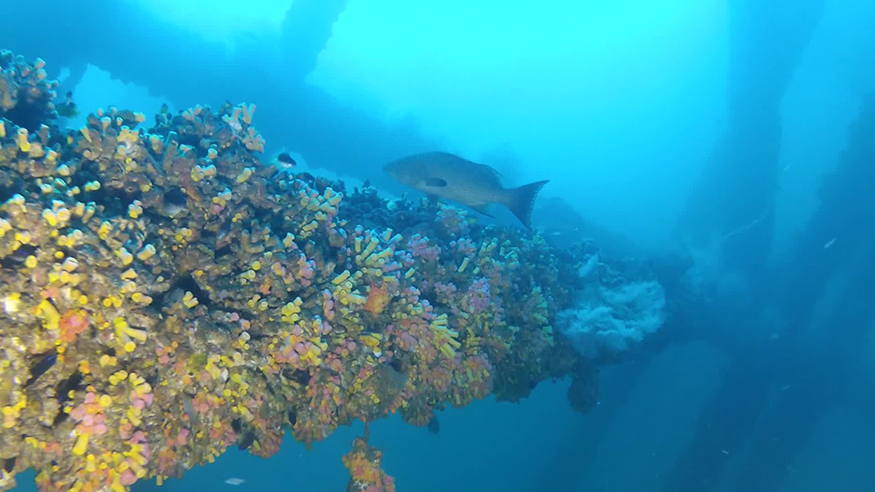
McDonough and his staff follow a fairly simple process for determining if a platform is an eligible candidate. “A company might have some concept that it’s close to one of our reef sites, or they might just want to reef it and not know what’s nearby,” he says. “At that point, we’ll look at the location and the water depth for that structure, which of our reef sites are nearby, and whether there’s enough room for it.”
McDonough also ensures that the eventual location for the jacket will have adequate clearance, enlisting feedback from the U.S. Coast Guard. “I try to provide the owners with several options, just in case there might be some reason that the closest or the deepest reef site isn’t necessarily their first choice.” McDonough then reviews the financial aspects of the proposal to ensure its accuracy as compared to similar projects. Ultimately, the state receives 50% of the savings from a reefed platform as a donation to the Artificial Reef Fund.
During the reefing process, offshore oil companies such as Fieldwood reef everything below the water line—aka the “jacket” of the oil platform—while scrapping the rest. “The production equipment, wires and topside equipment are all removed, disposed of or reused,” Seeger says. “What stays is the substructure from the water line down to the mud line.”
The jacket is then either reefed in place or barged to its ultimate destination. Joe Orgeron, chief technology officer for contractor Montco Offshore Inc. of Galliano, says his crews disassemble the platforms from one of the six lift boats in their fleet.
“At some point in time these platforms produced hydrocarbons from reservoirs below the sea floor, so the first order of work is cementing up the borehole and cutting that infrastructure 15-20 feet below the mud line,” Orgeron explains.
Montco then uses internal abrasive cutters to cut the structural support pipes for the boreholes and the jacket legs, or piles. “We take off the helideck and all the tanks and vessels and basically prepare for the jacket to be reefed,” Orgeron says. “We’ll then move away for a floating derrick barge to grab it. Tugboats will then tow the derrick barge, with the jacket on the hook, to a designated reef location.”
DUAL BENEFITS
In managing the program, McDonough, who has a master’s degree in oceanography, and his staff divide their responsibilities between reef locations in either offshore or inshore locations. He says mapping out locations for reef sites is a collaborative effort. “When the program was created, there was a process where they would gather together all the different user groups that would be affected by the artificial reef program—whether it be shrimpers, commercial fishermen or recreational anglers.” From the information they provided, LDWF proposed and developed the first of the designated reef sites.
In 1999, Louisiana created the world’s largest artificial reef out of a Freeport McMoRan Corp. sulfur rig off Grand Isle. The sulfur mine reef is now composed of more than 29 structures. The reef program has also developed 30 inshore reefs in Louisiana waters, primarily low profile reefs composed of shell or limestone.
Ultimately, Louisiana’s Artificial Reef Program strives to develop artificial habitats for marine life, while providing the dual benefit of reducing decommissioning costs.
“With any old oil platform, you see a lot of organisms swimming around it, feeding off it, etc.,” McDonough says. “Clearly, there’s some dynamic going on there, and if the platforms are removed that dynamic is gone. So, when we create a reef site out of a platform—instead of it being removed entirely—we’re able to keep some of that benefit.”
This article was originally published in the second quarter 2017 edition of 10/12 Industry Report.

